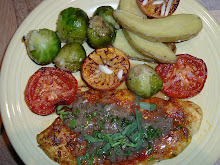The easiest way to lower sodium intake is to avoid prepared foods and table salt. The best way to boost potassium levels is to increase the intake of fruits and vegetables, whole grains and legumes. When cooking legumes, such as beans, soak dried beans over night, and then cook them with a few small pieces of Kombu (kelp), the minerals in any seaweed, help beans cook faster and they become more digestible.
Politically correct dietary gurus tell us that polyunsaturated oils are good for us and that saturated fats cause cancer and heart disease. Such misinformation! Stay away from oils that are derived from corn, soy, safflower and canola. The only oils/fats you should be using is olive oil, coconut oil and butter.
Special foods for people with high blood pressure include fruits, celery, garlic, onions, nuts, seeds, green leafy vegetables, sea vegetables, ground flax seed and broccoli. Cold water fish, such as salmon, mackerel, bonito, sardines and fish oil products.
Stay away from caffeine, alcohol and tobacco. Stress reduction techniques, such as yoga, biofeedback, meditation may offer some benefit in lowing blood pressure. But even more important, regular aerobic exercise, for one hour a day, 4-5 days a week. If you're a light sleeper or have trouble sleeping, exercise in the morning, not at night...
If you need to lose weight, try taking two tablespoons of raw apple cider vinegar (the brown murky looking stuff) with a little water just before each meal, this helps with digestion, and I've been told it helps with weight loss.
No corn, unfermented soy, flour, sugar, pasta or white rice. Quinoa is really good grain and should be used instead of rice. Use agave nectar, maple syrup or rapudura for a natural sweetener.
This information was found in, Healing Foods, Michael Murray. ND, Joseph Pizzorno. ND, Lara Pizzorno . M.A. , L.M.T. And Sally Fallon, and Mary G. Enig, Ph.D. Nourishing Traditions.


